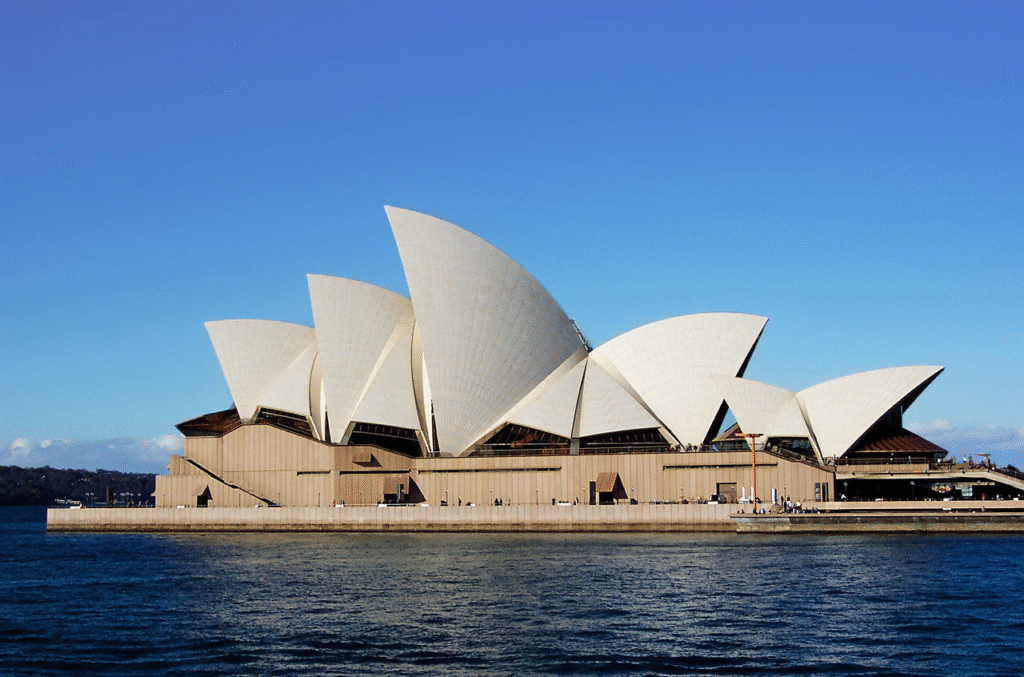Architectural Icons, Architecture is more than walls and roofs—it is the story of humanity written in stone, steel, and glass. Some buildings transcend their practical purpose to become symbols of innovation, culture, and progress. These architectural icons not only define skylines but also change how we think about space, beauty, and the very possibilities of design.
From ancient temples carved into rock to futuristic skyscrapers that pierce the clouds, certain structures have altered the course of architectural history. This article explores these game-changing creations, their cultural impact, and the lessons they offer for the cities of tomorrow.
1. The Meaning of an Architectural Icon

What makes a building iconic? It’s not simply age, size, or beauty—it’s the combination of vision, innovation, and influence. An architectural icon often:
- Breaks new ground in engineering, design, or materials.
- Symbolizes a culture, era, or idea, becoming more than a building—it becomes an emblem.
- Inspires countless others, shaping future architectural movements.
These buildings often reflect the aspirations of their time—whether spiritual, political, or technological—and endure because they speak to universal human desires for beauty, meaning, and progress.
2. Ancient Icons: The Foundations of Greatness
Before steel and glass, ancient civilizations created structures that still inspire awe.
- The Great Pyramid of Giza (Egypt)
Built over 4,500 years ago, the Great Pyramid was the tallest man-made structure for millennia. Its precise alignment with the stars and its engineering marvel still puzzle and inspire architects today. - The Parthenon (Greece)
Sitting atop the Acropolis, the Parthenon embodies the ideals of classical architecture—symmetry, proportion, and harmony. It wasn’t just a temple; it became a blueprint for Western architectural aesthetics. - The Colosseum (Rome)
Rome’s Colosseum revolutionized the idea of public space. Its elliptical form, tiered seating, and innovative use of concrete influenced arenas and stadiums around the world.
These ancient icons laid the foundation—literally and metaphorically—for how we understand architecture’s role in society.
3. Sacred Spaces: Architecture for the Divine
Throughout history, some of the most iconic buildings were created to honor the sacred.
- Gothic Cathedrals of Europe
Cathedrals like Notre-Dame in Paris or Chartres in France reached toward the heavens with soaring spires, ribbed vaults, and stained glass that transformed light into a spiritual experience. - The Taj Mahal (India)
Built as a mausoleum, the Taj Mahal is more than a love story—it’s an architectural masterpiece that fuses Persian, Indian, and Islamic styles, representing a pinnacle of harmony and craftsmanship. - Borobudur (Indonesia)
This massive Buddhist temple, shaped like a mandala, shows how architecture can become a spiritual journey, leading worshippers from earth toward enlightenment.
Sacred buildings became anchors of culture, shaping city layouts and inspiring awe for generations.
4. Renaissance and Enlightenment: The Revival of Classical Ideals
The Renaissance marked a turning point. Architects looked back to classical Greece and Rome—but didn’t just imitate. They innovated.
- St. Peter’s Basilica (Vatican City)
With its colossal dome designed by Michelangelo, St. Peter’s became a model for churches worldwide. Its blend of classical symmetry and Renaissance grandeur shaped Western architecture for centuries. - The Palace of Versailles (France)
Versailles redefined power and beauty in architecture. With its lavish halls and formal gardens, it set the standard for royal palaces and influenced city planning and landscape design across Europe.
These buildings were not just structures—they were statements of human ambition.
5. Industrial Revolution Icons: Building the Modern World
The 19th century brought new materials and technologies—iron, steel, and glass—that transformed architecture.
- The Crystal Palace (England)
Built for the Great Exhibition of 1851, this massive glass-and-iron structure was a revelation. It demonstrated that architecture could be light, modular, and industrial, paving the way for modern construction. - The Eiffel Tower (France)
Once controversial, the Eiffel Tower became one of the most recognizable structures in the world. Its iron latticework turned an engineering experiment into a global symbol of innovation and modernity. - Brooklyn Bridge (USA)
A marvel of engineering, the Brooklyn Bridge combined stone towers and steel cables, linking Manhattan and Brooklyn. It symbolized urban growth and connectivity, influencing bridges worldwide.
These icons marked a shift from stone to steel, from tradition to experimentation.
6. 20th Century Icons: Modernism and Beyond
The 20th century unleashed radical shifts in architecture. Beauty was no longer about ornament—it was about form, function, and simplicity.
- Villa Savoye (France)
Designed by Le Corbusier, this house encapsulated modernist ideals—clean lines, open plans, and the idea that a house should be a “machine for living.” - Fallingwater (USA)
Frank Lloyd Wright’s masterpiece blended architecture with nature, placing a home over a waterfall. It redefined how buildings could harmonize with their surroundings. - Sydney Opera House (Australia)
With its sail-like forms, the Sydney Opera House challenged engineering limits and became a global symbol of creativity and cultural pride. - Seagram Building (USA)
Mies van der Rohe’s glass-and-steel skyscraper refined the International Style—minimalist, elegant, and corporate chic, influencing office towers everywhere.
These buildings didn’t just change skylines—they changed how we think about living, working, and gathering.
7. Contemporary Icons: The New Frontier

The 21st century continues to push architectural boundaries.
- Burj Khalifa (UAE)
The tallest building in the world, the Burj Khalifa is more than height—it’s a statement of ambition and engineering genius, blending Islamic design motifs with futuristic technology. - The Louvre Pyramid (France)
I.M. Pei’s glass pyramid sparked debate but ultimately became an iconic fusion of modern geometry and historic context. - The Guggenheim Museum Bilbao (Spain)
Designed by Frank Gehry, this titanium-clad building sparked the “Bilbao Effect,” showing how bold architecture can revive entire cities. - Gardens by the Bay (Singapore)
Blending nature, art, and technology, these “supertrees” and biodomes show a new kind of urban beauty—eco-architecture as spectacle.
These contemporary icons reflect today’s values: sustainability, cultural fusion, and technological daring.
8. Why Architectural Icons Matter
Architectural icons are more than tourist attractions. They:
- Inspire innovation – By breaking rules, they open doors for new design possibilities.
- Shape cultural identity – They become symbols of nations, cities, and peoples.
- Connect the past and future – They remind us of where we’ve been while pointing to what’s possible.
From the Parthenon to the Burj Khalifa, these structures show that architecture is not static—it’s a dialogue across centuries.
Conclusion
Every era has its icons—buildings that capture its spirit, challenge its limits, and leave a legacy that reshapes the world.
They are more than structures—they are manifestos in stone, steel, and glass, reminders that human imagination has no ceiling. As architects continue to innovate, the next great icon may be rising right now, waiting to change how we see the world again.
Also Read: Urban Aesthetics: Redefining Beauty In Modern Cities
FAQs
1. What makes a building an “architectural icon”?
A building becomes iconic when it breaks new ground in design, engineering, or cultural symbolism and inspires future generations.
2. What are examples of ancient architectural icons?
The Great Pyramid of Giza, the Parthenon, and the Colosseum are ancient icons that continue to influence architecture today.
3. How did the Industrial Revolution change architecture?
It introduced iron, steel, and glass, leading to innovative structures like the Crystal Palace and the Eiffel Tower, which transformed building design.
4. What role do modern icons play in cities?
Modern icons like the Sydney Opera House or the Guggenheim Bilbao boost cultural identity, tourism, and urban pride.
5. Why do some iconic buildings spark controversy?
Many icons—like the Eiffel Tower or Louvre Pyramid—were initially criticized for being too radical, but their boldness often made them memorable and influential.
6. Can contemporary buildings become future icons?
Absolutely. Structures like the Burj Khalifa or Gardens by the Bay are already seen as future classics, blending innovation with cultural meaning.
7. Why are architectural icons important to society?
They inspire, symbolize progress, and connect human creativity across time, reminding us that cities are more than places—they are works of art.